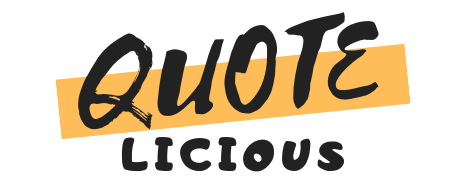6 Facts That You Didn’t Know About Red Light Therapy
Are you familiar with red light therapy? Red light therapy is a form of phototherapy that uses carefully controlled wavelengths of natural, visible red, or near-infrared light to provide therapeutic benefits.
Red light therapy is becoming increasingly popular as a natural, non-invasive treatment for skin ailments and other bodily conditions. But there’s much more to this powerful healing method than meets the eye. This article will discuss the benefits of this therapy and some lesser-known facts about it. But first, let’s get to the main details.
What is Red Light Therapy?
Red light therapy is a form of phototherapy that uses natural, visible red, or near-infrared light to provide therapeutic benefits. The light is delivered using low-level lasers, LED lights, and other devices. Some of the benefits of red light therapy include reducing inflammation and pain, improving wound healing, boosting energy levels, rejuvenating the skin, and improving mood. It is a safe and non-invasive treatment with no known side effects.
Red light therapy can be used to treat a wide range of conditions, such as arthritis, muscle soreness, nerve damage, psoriasis, and acne. Some studies have also shown that it can reduce wrinkles, improve collagen production, and even help with hair loss. Red light therapy is becoming increasingly popular as more research about its potential health benefits comes out.
How Does Red Light Therapy Work?
Red light therapy works by stimulating the mitochondria in cells, which helps to promote cell growth and regenerate tissue. The wavelengths of red and near-infrared light that are used penetrate the skin and stimulate healing and rejuvenation from the inside out.
By stimulating the mitochondria, red light therapy boosts energy levels and encourages circulation, which increases oxygen to cells and helps them function more efficiently. It also reduces inflammation and pain while promoting the healing of skin injuries, scars, wrinkles, and discoloration. Studies have found that certain wavelengths can even help to treat hair loss or thinning in some individuals.
Facts That You Didn’t Know About Red Light Therapy
There are several facts that many people don’t know about Red Light Therapy (RLT).
Treats Various Conditions
One of the most remarkable facts about RLT is its ability to treat a range of conditions. It has been used to manage skin disorders such as psoriasis, rosacea, and vitiligo and reduce inflammation in arthritis and fibromyalgia. In addition, it can help heal wounds and improve circulation in people with diabetes.
It has even been used to treat depression and anxiety, along with post-traumatic stress disorder and neurological disorders such as Parkinson’s disease, multiple sclerosis, and stroke. Finally, it can be used to alleviate chronic pain associated with conditions such as back and neck injuries, migraines, sciatica, and carpal tunnel syndrome.
Safe and Non-Invasive
Another fact that many people don’t know about RLT is that it is a safe, non-invasive treatment with no known side effects. It is typically used in combination with other therapies, such as physical therapy or medications, to enhance the healing process for many conditions. In addition, because it is non-invasive, there is no downtime or recovery time associated with red light therapy.
In other words, you can return to your normal activities immediately without interruption. This makes it a great option for those looking for an alternative treatment that won’t interfere with their everyday life.
Cost Effective
RLT can be a cost-effective treatment option for many conditions. It is much less expensive than traditional treatments like surgery and medications, and the results can be seen in as little as one or two sessions. Furthermore, the cost of RLT is often covered by insurance plans, making it even more affordable.
RLT can often be used in combination with other treatments, like physical therapy or chiropractic care, providing a comprehensive approach to healing and recovery. Finally, since RLT is a non-invasive treatment that requires no medication or surgery, it is considered safe and has few potential side effects. All of these factors make RLT an attractive treatment option for many medical conditions.
Convenient
Another major advantage of red light therapy is its convenience. Unlike other treatments, you don’t have to go to the doctor’s office or hospital for sessions. Instead, you can do them at home with a simple device that plugs into your wall. This makes it much easier to get the treatment you need whenever and wherever you need it.
However, to achieve the best results, it’s important to follow the directions of your device and use the treatment regularly. Some people even find that red light therapy helps them keep a consistent sleep schedule, as it can be used both during the day for energy and at night for improved rest.
Improves Hair Growth
Some studies have found that red light therapy can help improve hair growth in certain individuals. It has been shown to increase blood circulation to the scalp and stimulate hair follicles, leading to thicker, healthier-looking hair.
Studies have found that regular red light therapy sessions can help combat the effects of androgenetic alopecia, a common cause of hair loss in both men and women. Red light therapy can also treat scalp conditions like dandruff, seborrheic dermatitis, and psoriasis, which may contribute to hair loss.
Different Types of Red Light Therapy
When it comes to red light therapy, there are a few different types. One common type is low-level laser therapy (LLLT), which uses lasers that emit very low energy levels in certain light wavelengths.
Another type of red light therapy is photobiomodulation (PBM), which uses LEDs that emit higher-energy levels of light in a variety of wavelengths. This type of treatment has been found to be particularly effective against skin conditions like psoriasis and atopic dermatitis, as well as chronic pain such as sciatica and fibromyalgia.

In conclusion, red light therapy is a safe, non-invasive treatment option that can be used to treat a variety of conditions. It is cost-effective, convenient, and has few potential side effects. Additionally, it can even help with hair growth and scalp conditions. With all the benefits of RLT, it’s no surprise that this treatment is becoming increasingly popular. Ensure that you get it from a trusted source and always follow the directions of your device or practitioner for the best results.







